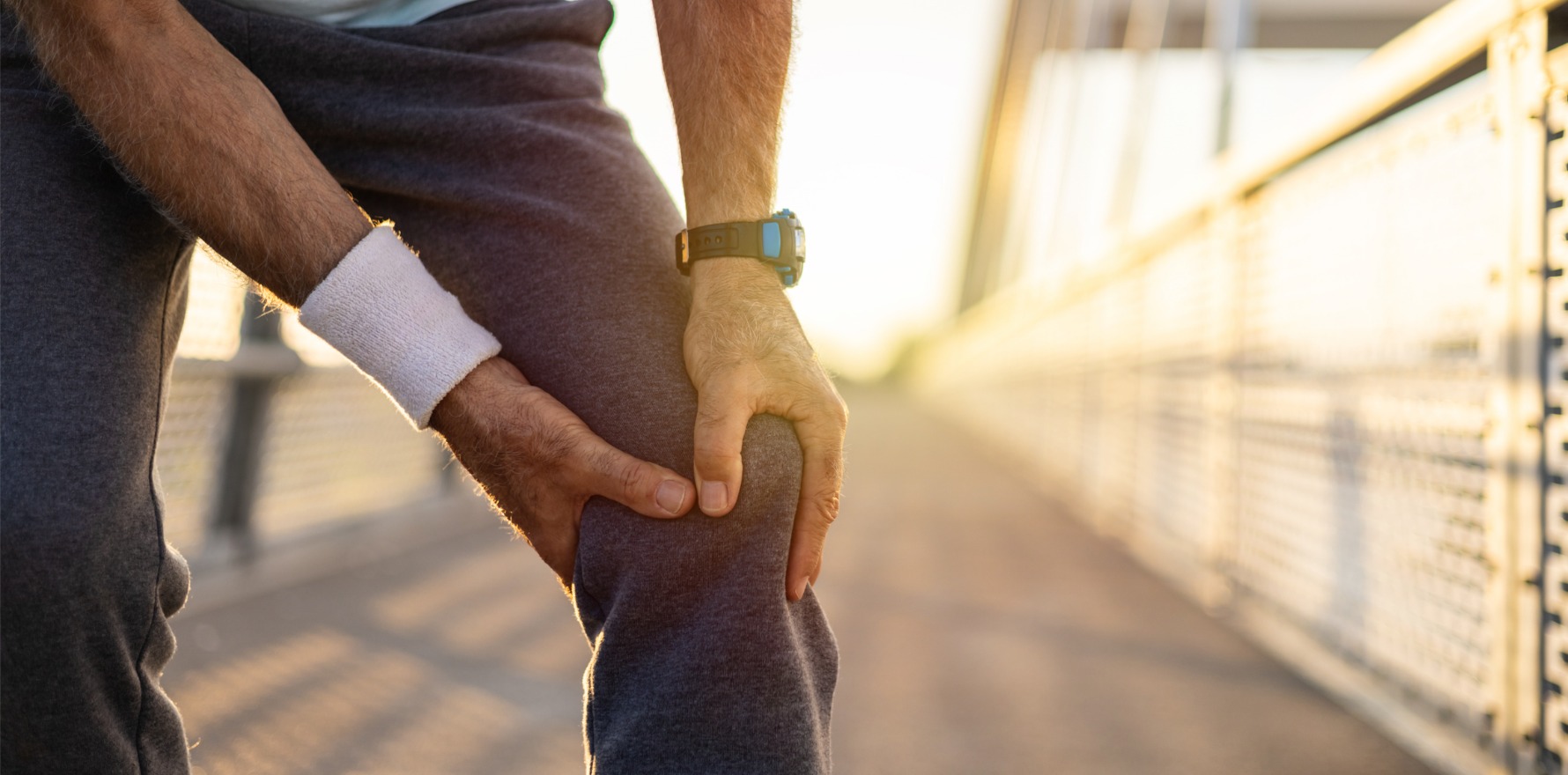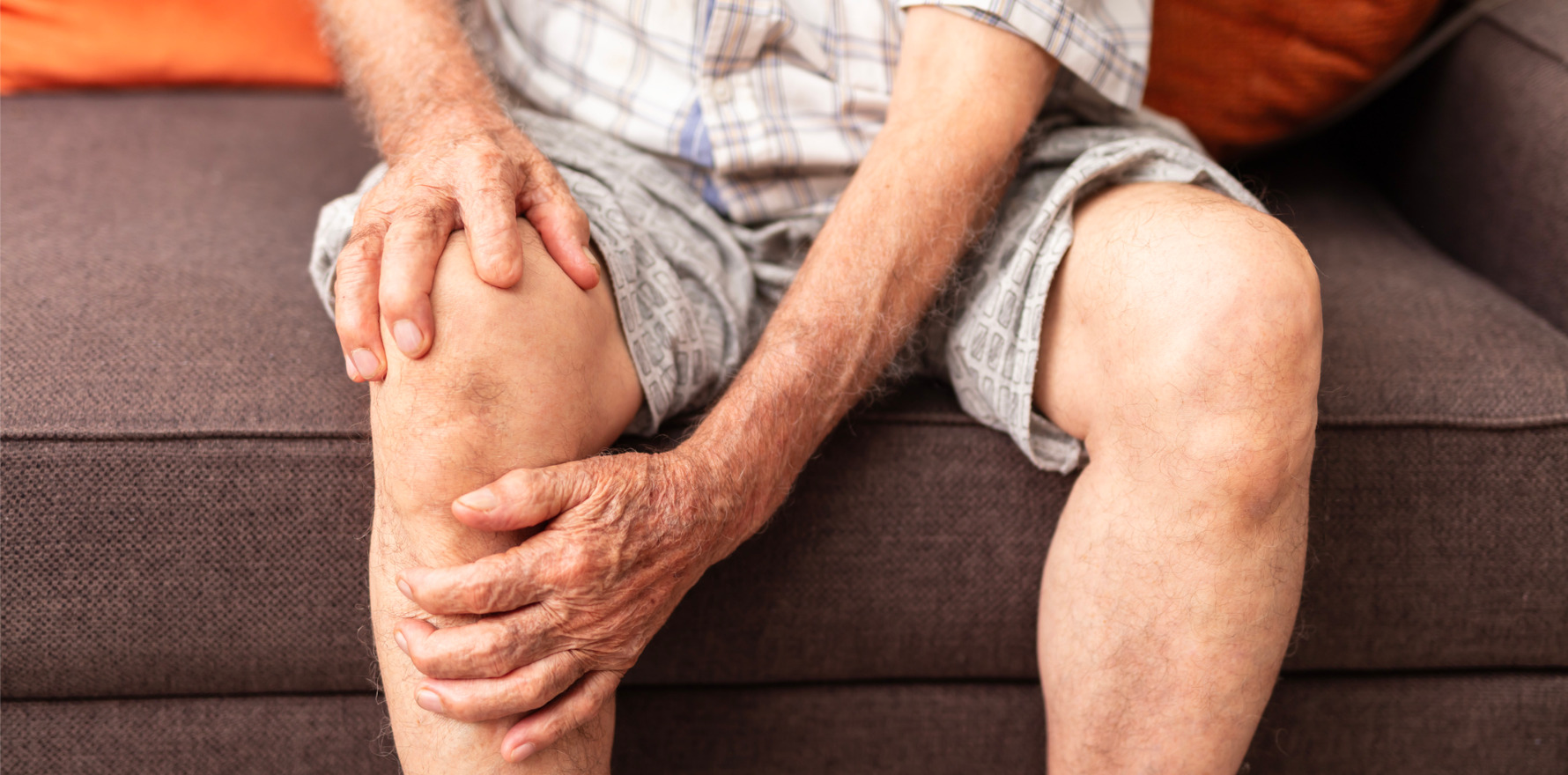Less imaging and surgery, more exercise and positive language are at the heart of these new Australian guidelines.
The understanding of knee osteoarthritis has evolved, say the writers of a new clinical care standard, and clinician language must evolve too – away from excruciating phrases like “bone on bone”, which make patients fearful of their best strategy: exercise.
Knee osteoarthritis is estimated to affect more than 1.2 million Australians and almost a third of people over 75 years.
The Australian Commission on Safety and Quality in Health Care has revised its 2017 standard to focus on four main messages: modify the language used with patients; rely on clinical diagnosis without imaging; promote non-surgical interventions, especially exercise; and use the right pain medications while avoiding untested therapies.
Arthritis Australia is one of 21 peak medical bodies to endorse the new standard, with CEO Jonathan Smithers saying: “We strongly welcome the revised clinical care standard with its emphasis on allied health support for physical activity and weight loss, and symptom management.
“However, the crucial next step is for governments to better fund this care so that it is accessible and affordable to all who need it.”
This version emphasises a biopsychosocial approach to pain and includes guidance on equity and cultural safety. Aboriginal and Torres Strait Islander patients have 1.5 times the risk of developing knee OA and those with severe disease are up to 50% less likely to receive a knee replacement.
GP Dr Phoebe Holdenson Kimura chaired the topic working group that developed the guidelines, which included two rheumatologists – Professor David Hunter and Professor Rachelle Buchbinder – as well as orthopaedic surgery, radiology, allied health, nursing and patient representatives.
“There used to be much more of a cartilage-based understanding of knee OA, but now we have a much richer picture,” she tells The Medical Republic.
“It’s also the bone and the ligaments and the muscles surrounding the joint, and we know pain has a biopsychosocial component.
“It’s not just thinking about the anatomy but the whole of the joint and the whole of the person.”
Language and communication
Words matter, and certain commonly used language can instil a negative mindset and stop patients taking a more active role in managing their OA.
“The way that we think about and talk about osteoarthritis with patients has changed, and this is the first time that we’ve included information about that and communication tips,” Dr Holdenson Kimura says.
“There’s unhelpful terms that exist in the community, misconceptions that we can be unintentionally fostering as clinicians.”
Terms like “wear and tear”, “degenerative condition” and especially “bone on bone” can make patients more reluctant to load-bear on their knees, fearing further damage.
“I’m still hearing [‘bone on bone’] a lot from patients, and I think that leads patients to think that that it’s just a matter of time before they’ll need a joint replacement.
“It makes them very fearful of movement and makes them think the more they move or load the knee, the more damage they might do. What the research shows is that that’s not the case.
“I’ve used these sorts of phrases with my patients as well, so I think it is an evolving space.”
The standard comes with positive phrases to use instead of ones that inadvertently cause fear.
Clinical diagnosis, not imaging
GPs should be confident making a clinical assessment of knee osteoarthritis, the new standard says, based on the chief symptoms of pain, swelling and stiffness, and loss of function.
Correlation between radiologically visible changes and symptoms is poor, it says: “Minimal anatomical changes can be associated with substantial pain while more observable structural changes can occur with fewer and less severe accompanying symptoms.”
It’s not only that imaging lacks utility, Dr Holdenson Kimura says, but that it can be alarming and lead patients to catastrophise.
“Once you order imaging, often it leads to a cascade of further investigation and potentially inappropriate management,” she says.
“Particularly with MRI scans, there’s often very detailed and lengthy reports that come back, and it’s difficult for a GP and a patient to look at that report together and not come to the conclusion that there’s something dreadful happening within their joint, that something inside the joint needs to be fixed, and fixed with surgery.
“It’s really hard to unsee that report. And of course it comes at a cost to individuals as well as the healthcare system.”
She says a diagnosis of uncomplicated knee OA “can be confidently made on the basis of a good history and clinical examination – if there are no atypical features, then no imaging needs to be done, no MRI, not even an X-ray”.
“If there are concerning features that make us think that it might not be a typical presentation, the preferred first line imaging would be an erect X-ray,” she says.
The standard lists several clinical assessment tools and the alternatives to rule out, such as infection, trauma, malignancy and the more inflammatory conditions of rheumatoid arthritis or gout.
Less surgery, more exercise
MBS claims for knee arthroscopy in people over 45 years fell by half between 2015 and 2022, which shows recent messaging has been a success, Dr Holdenson Kimura says.
“We know people don’t benefit and might even come into harm’s way,” she says.
“My sense is that the message around knee arthroscopy for OA has actually penetrated very well among clinicians but also in the general public.”
Knee replacements will be necessary for some, she says, but they need to be given to the right patient at the right time, and they should not be seen as inevitable nor as inevitably successful.
Presently about 53,000 Australians a year have a replacement, and that number is expected to rise with the age of the population.
“By 2030 we’re expecting the rate of knee replacements to [triple], and one of our aims in with the CCS is to really to try and reduce that rate,” Dr Holdenson Kimura says.
The new standard says nine in 10 people with knee OA can manage without a joint replacement, and that even those who do eventually need the surgery will benefit from physical activity.
Although knee replacements “can be life-changing”, there are costs that not all patients are aware of: lengthy rehabilitation, risk of infection, and risk that the surgery will not actually reduce pain.
“It’s not a magic bullet,” Dr Holdenson Kimura says. “There’s this idea that you’ve got to grin and bear it but once the surgery is done, you’re up and ready to go and it’s solved all your problems. Unfortunately, that just isn’t the case.”
The big message to clinicians is to “be proactive in offering support for non-surgical interventions, and to be doing that early”.
“We know that that joints are designed to be loaded, they’re designed to move, and they’re actually nourished by all of that,” she says.
“Movement is safe, it just needs to be sensible – we’re not encouraging patients to go and run a marathon, but we do know that holding back from movement actually causes further stiffness of the joint and can change the gait further.
“What we hear from patients – certainly in my experience as a GP – is that where they are given that positive messaging, and they see a physiotherapist or an exercise physiologist and find the exercises that are best for their joint, they do come back and say that their knee pain is much improved.”
The standard talks about weight “management” rather than loss, and for some patients this can mean maintaining a stable weight with a focus on good nutrition.
“That’s a complex area. We do know that reducing weight by 5% to 10% does reduce pain and increase mobility, but that’s easier said than done – it’s hard for a lot of people, particularly if they are in pain,” Dr Holdenson Kimura says.
Semaglutide and other obesity drugs are not mentioned in the new standard, largely because the Australian government line is to steward these drugs for people with diabetes, she says. Bariatric surgery is mentioned as an option.
Related
Medications and other treatments
Medications should be promoted to patients as a means to help them stay active, not replace activity.
The clinical standard advises against opioids for knee OA pain except for short-term use in patients “with severe persisting pain not relieved by first-line medicines and optimal non-surgical interventions, and who are awaiting non-GP specialist review”.
Intra-articular corticosteroid injections are recommended for limited use, but long-term or repeated injections can cause cartilage damage and further joint deterioration.
Other options are topical or oral NSAIDs, topical capsaicin (which can cause skin side effects for some), paracetamol and the SNRI duloxetine.
Platelet-rich plasma, hyaluronic acid, stem cell treatments and medicinal cannabis are not recommended as they lack evidence, at least so far.
Professor Hunter, who was involved in writing the standard, is conducting a trial of mesenchymal stem cells for knee osteoarthritis, but the results aren’t expected until the end of next year.
Gabapentin and pregabalin and medical cannabis are not recommended “due to potential for significant harm”.
Cultural safety
When treating Aboriginal and Torres Strait Islander patients, the standard advises a collaborative approach to tailor care to the individual’s needs and preferences.
It encourages supporting patients to self-report their ATSI status, engaging interpreters and cultural translators and Indigenous health workers if appropriate, including family members or friends in decision making, and being as flexible as possible with service delivery to optimise attendance and help build trust.
“We know that in both rural and urban areas, Aboriginal and Torres Strait Islander people experience difficulties in accessing culturally appropriate health services near home, and are 50% less likely to access primary care management of their knee OA than other Australians,” Dr Holdenson Kimura says.
She says the reasons for the elevated risk of knee OA in Indigenous patients are unknown but are being studied by a research group, which has produced a range of videos of First Nations patients talking about their experience with knee OA and what has been helpful to them.
System capacity
Asked whether care according to the revised standard will be more or less intensive to deliver – i.e. whether it will further strain or relieve the already stretched capacity of Australian general practice, rheumatology and allied health – Dr Holdenson Kimura says it’s more a matter of coordination.
“I don’t necessarily see it as being that much more intensive, when you compare it to the status quo of seeing a surgeon and maybe having surgery that you don’t need and then having rehabilitation ahead of you,” she says. “But I guess it does require a more coordinated approach.
“I’m very optimistic. I feel the healthcare system is able to deliver what we’re talking about, but clinicians and patients need to be supported.”
She says as a GP making an initial assessment of knee OA, she would provide positive messaging around movement and debunk any misconceptions, then create a management plan, which might involve referral to physiotherapists, exercise physiologists or dieticians.
The standard emphasises the importance of review – “It’s not set and forget, it’s saying ‘let’s give these approaches a go, and come back to see me in a month or three months to see how you’re going with your pain. Obviously, if we’ve started a medication, then we’d see them sooner, within two or three weeks,” she says.
“Many of my patients with knee OA also have other chronic diseases, so when they come to see me for review of their hypertension, I would also check how their knee OA is going. Over time, they get a better sense of what seems to be causing their flares, how to manage those flares, how to stay active, and that allows them to take control and feel proactive in their own care.”
Some patients do well with two or three physiotherapy visits, but for those who need more intensive and supervised care there are also formal programs such as GLA:D, from Denmark.
“In the clinical care standard we’re not saying there’s a specific type of program that patients need to use for care,” Dr Holdenson Kimura says.
“What’s really important is that they receive an early diagnosis, ideally without imaging, with less medical intervention and with very clear messaging around the importance of movement for their knee – and that we’re all saying the same thing.”
Osteoarthritis of the Knee Clinical Care Standard, ACSQHC, 15 August 2024





